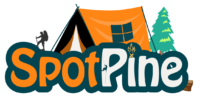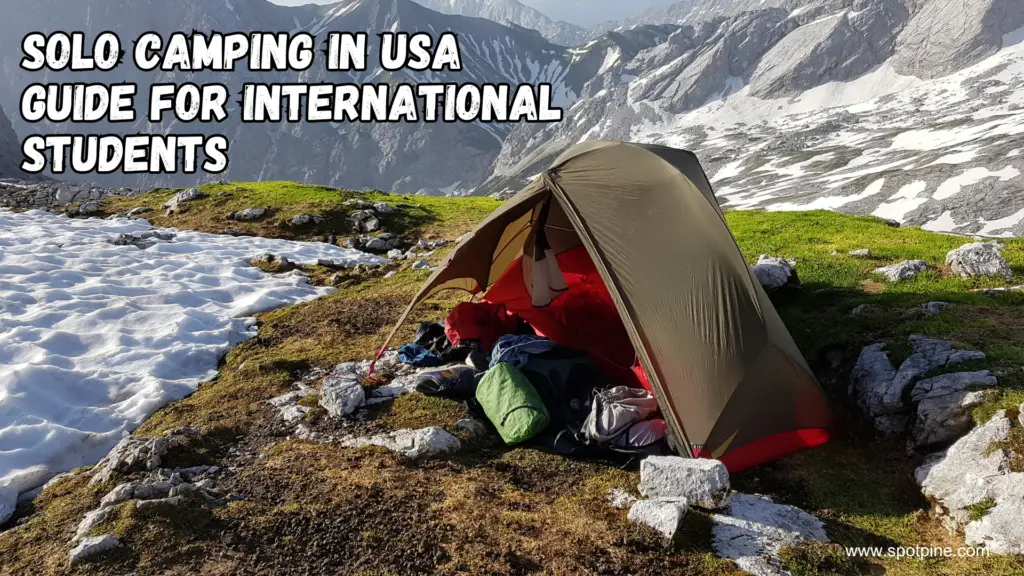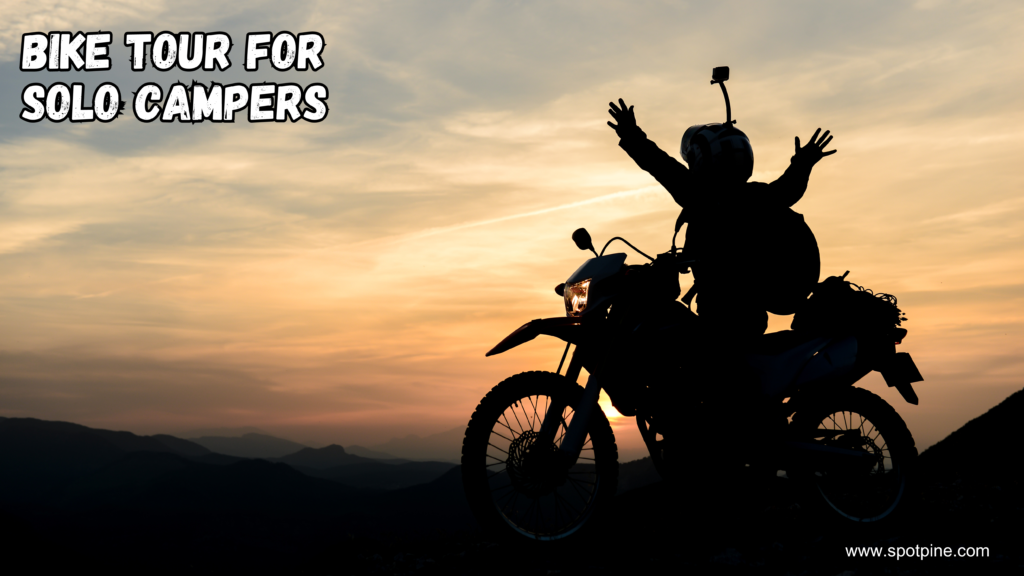Solo camping in the USA offers international students an unparalleled adventure. It allows them to explore diverse landscapes while gaining independence.
Camping alone as an international student can be an enriching experience, providing both challenges and rewards. It’s an excellent way to immerse oneself in the American outdoors and enjoy the tranquility and beauty of nature. Solo camping encourages self-reliance and offers a break from the bustling college environment.
The United States boasts a vast array of camping destinations suitable for solitude-seeking individuals, from the majestic mountains of Colorado to the serene beaches of California. Each site promises a unique back-to-nature encounter, often at a reasonable cost. The key to a successful solo camping trip lies in thorough preparation, from understanding local regulations to ensuring personal safety. With careful planning, international students can embark on an unforgettable journey into the wild, experiencing firsthand the country’s natural wonders.
Solo Camping In USA
The joys of solo camping attract many international students to remote USA landscapes. Stepping into the wild alone builds independence and inner strength. It lets students embrace nature at a personal pace. They learn to rely on their skills while enjoying peaceful solitude. Solo camping also improves problem-solving abilities. Not to mention, it provides a chance to unplug from technology and hectic student life.
Solo journeys help in understanding different cultures within the USA. This experience is invaluable for students far from home. They can find new confidence through such adventures. The serenity of nature’s backdrop makes for a perfect study environment too. Studying amidst nature can boost concentration and memory. Ultimately, solo camping in the USA can be a transformative experience for international students.
Preparation Checklist
To enjoy solo camping safely, quality equipment is a must. A durable tent shields you against the elements. Choose a sleeping bag suited for the climate. A reliable backpack is your mobile storeroom. Packing a multi-tool, first-aid kit, and water purification system is wise. Bring navigation tools such as a compass or GPS. A portable stove or fire-starting gear is essential for cooking. Don’t forget non-perishable food items and enough water. Light sources like a headlamp or flashlight will prove invaluable.
Study the local fauna before you set out. Knowing which animals inhabit the area is important for safety and respect. Carry bear spray in bear country, and learn how to store food properly to avoid attracting wildlife. Understand the signs of animal presence and what to do if you encounter them. A smart camper always maintains a safe distance from wildlife.
Read About Solo Camping Safety Checklist for Beginners
Selecting Your Campsite
Choosing the right campsite is key for solo campers. National Parks offer stunning views and protected nature. They’re often more secure with rangers and established rules. Private Campgrounds can be cozy with added amenities, yet may lack the wild feel.
Each option has pros and cons. National Parks are immersive experiences but can be crowded during peak seasons. Private Campgrounds provide comforts like toilets and showers but might cost more. Decide what’s important for you!
| Top Solo Camping Destinations |
| Zion National Park, Utah |
| Yosemite National Park, California |
| Glacier National Park, Montana |
| Big Bend National Park, Texas |
Safety Tips
Always research the area before setting out and use a compass or GPS device for navigation. Ensure maps are downloaded if relying on digital devices.
Avoid hiking alone at night and stay on marked trails to prevent getting lost. Tell someone your plan and expected return time.
| Emergency Situation | What to Do | Who to Contact |
| Injury or Sickness | Apply first aid; seek immediate help | Call 911 or local park rangers |
| Getting Lost | Stay calm; use navigation tools | Contact park services or use SOS signals |
| Wildlife Encounter | Keep distance; do not feed or provoke | Notify park rangers if threatening |
Know More About Solo Camping Tips
Legal Considerations
International students must secure proper visas or travel authorizations before embarking on solo camping adventures in the USA. The type of visa required can depend on your country of origin. A tourist visa (B-2) is usually suitable for short camping trips. For longer stays, a different visa might be needed.
It’s essential to understand and follow the camping regulations of each state and park. Some areas have specific rules about campfires, wildlife interaction, and waste disposal. Always check for the most current information on park websites or local ranger stations regarding camping policies.
Budgeting Your Trip
Camping costs vary across the US, with some parks offering free sites while others charge fees. Expect to pay an average of $12 to $25 per night for basic tent sites. Prices can soar upwards of $40 at popular national parks or include amenities.
Smart budgeting can trim expenses. Consider these tips:
- Book in advance to snag cheaper rates.
- Opt for less popular campgrounds to save money.
- Pack your own gear to avoid rental fees.
- Prepare meals rather than eating out.
Know About How to Plan a Solo Camping Trip on a Budget?
Cultural Experiences
Exploring solo camping in the USA offers international students unique cultural experiences. Engage with locals to discover the American way of life.
Through local communities interaction, students gain insights into diverse traditions. They learn about regional customs, foods, and stories.
This leads to personal growth. Solo travelers often find independence and confidence. They navigate new situations, becoming resourceful and adaptable.
Solo Female Campers
Solo female campers have unique safety needs. Always share your location with a trusted friend. Rely on trusted resource apps like AllTrails for route tracking. Learn self-defense basics and carry legal protection items where permitted.
Join online communities such as Women Who Hike or AdventurUs Women. They offer valuable tips and solidarity. Engage in local camping workshops designed for women. They can provide essential survival skills and peer support.
Technology Aids
Navigate USA’s camping sites easily with the right apps! AllTrails guides you with maps and trails. Google Maps helps find local amenities quickly. Always carry a charged phone and backup power.
For safety, download offline maps in case of no signal. Use RescueMe for SOS alerts. Keep contacts informed with GPS tracking apps like MapMyHike.
In remote areas, use apps like Zello to turn your phone into a walkie-talkie. Mesh networking apps like FireChat work without cell service. With these, you’re never truly alone!

Leaving No Trace
Treating nature with respect is key. Always pack out what you bring in. Leave campsites cleaner than you found them.
Use biodegradable soap for washing. Keep water sources clean.
- Set up camp on durable surfaces.
- Minimize campfire impacts. Use a camp stove.
- Observe wildlife from a distance.
- Dispose of waste properly.
- Respect wildlife and plants.
These actions protect our planet and ensure camping stays enjoyable for everyone.
FAQs Of Solo Camping In USA For International Students
Is It Ok To Go Camping Alone?
Yes, it’s okay to camp alone if you follow safety guidelines and inform someone about your plans. Solo camping offers a unique opportunity for self-discovery and connecting with nature. Always prioritize safety and be prepared.
Can You Free Camp In USA?
Yes, you can free camp in the USA, often referred to as dispersed camping, primarily on public lands managed by the BLM and USFS.
Where Can I Go Solo Camping?
Solo camping spots include Assateague Island, Maryland; Joshua Tree, California; Grand Canyon, Arizona; and Big Sur, California. Always prioritize safety and preparation.
How Much Does It Cost To Camp Around The US?
Camping costs in the US vary, with prices ranging from free to upwards of $50 per night depending on location and amenities.
Conclusion
Embracing the serenity of nature, solo camping in the USA promises adventure and self-discovery. Take this chance to forge unforgettable memories amidst America’s stunning landscapes. International students, embark solo, armed with knowledge and spirit! Start planning. Immerse yourself in the great outdoors!



